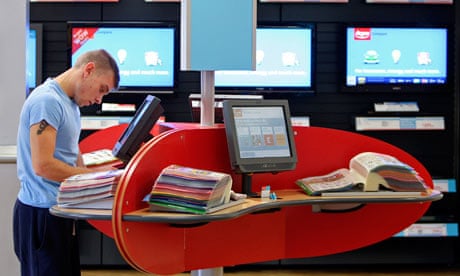We've all done it: as soon as something we own looks slightly tatty or unfashionable, it goes in the bin or the recycling. New is desirable and out of date is disposable in a 'throw away' society, a world in which most business models are geared towards selling as much product as often as possible.
But what if a product developed or improved over time? Would we throw it away so readily? Imagine a teacup, for example, which develops a particular pattern in the glaze as it gets older or trainers that fade to reveal a previously invisible pattern as they age.
These are not just concepts. Both of these products were created by students at the University of Brighton to explore the concept of "emotionally durable" design – design that creates a deeper bond between people and products and extends their "use-career".
"Say you have a product that lasts on average 12 months," says Jonathan Chapman, professor of sustainable design at the university, who developed the emotionally durable design concept. "If you can extend that use-career to 18 months through emotionally durable design, you have bought about a 50% reduction in waste consumption in all the materials and energy and systems associated with that product,"
Chapman advises a number of global businesses on how they can make their products and services more sustainable – environmentally, socially and financially.
"Companies are thinking, 'How can we get customers to shop with us more regularly?'" he says. "The idea is to use product and brand as talking points; the product is a conversation piece that creates a lasting connection between the business and its customers and, ultimately, increases loyalty to the brand and drives sales."
Emotional durability is one of a number of sustainable design approaches. Others include cradle-to-cradle design and energy efficiency. When you consider that on average an estimated 80% of the environmental impact of a product is embedded at the design stage, it's clear that sustainable design is an important mechanism for reducing the impacts of consumption.
"Design priorities are different for individual categories and products," says Chris Sherwin, head of sustainability at Seymourpowell, who has written about design on the network. "For electronics, improving durability or recyclability is essential. For something like a kettle, it's about increasing energy efficiency; for other products, such as 'smart' thermostats that 'learn' a resident's living patterns and adjust room temperatures accordingly, thereby saving energy, it's about how the design can make consumer behaviour more efficient."
This applies to new business models, too. Already customers are getting used to not owning physical goods – books are now digital, you can rent access to music, films, and cars, for example. If people do own hardware, its functionality can often be upgraded via software updates, meaning they need to replace it less often.
Within this paradigm, brand identity and relationships with consumers can become even more important. A 2011 Euro RSCG survey of 18-25 year olds found that 56% of those questioned believed it was important to find brands to which they could be loyal, and that those brands reflected their values and boosted their social status.
"Companies are going to have to meet customers' demands and needs with different business models and [in some cases] service-based systems," says Fiona Bennie, head of sustainability at design agency Dragon Rouge. "This requires them to think about how different the world is going to be in 20 years time, then trial and transition to alternative business models. If they don't, it's increasingly likely a clever start up will.
"It will be interesting to see how many of the big incumbent brands will be around in the future – given the current lack of sustainable innovation, I'd bet on lots of them not surviving."
An indication of the extent of the changes that companies may have to make to survive is demonstrated by Dragon Rouge's Brand Futures project, published last year, which considered how some of today's well-known brands might have evolved by 2030. In its projections, mining company Rio Tinto is a global leader in sourcing, grading, re-purposing and processing the world's used metals, plastics and minerals and mining discarded materials from landfill sites; easyJet has become Europe's premier high-speed rail company; and Argos leases its products to consumers instead of selling them, and provides an ongoing repair service.
These may seem farfetched, but some in the design community think changes of this magnitude are essential if businesses are to succeed in a world where raw materials will cost more, and in which today's rampant consumerism and related business models may not be possible.
Could changes this seismic occur? "The only way that things will change is by designers and businesses being bold and creating successful examples of popular sustainable products and services that make a profit," says Chapman. "They need to lead by example."
This content is brought to you by Guardian Professional. Become a GSB member to get more stories like this direct to your inbox

Comments (…)
Sign in or create your Guardian account to join the discussion